Music
Trailers
DailyVideos
India
Pakistan
Afghanistan
Bangladesh
Srilanka
Nepal
Thailand
StockMarket
Business
Technology
Startup
Trending Videos
Coupons
Football
Search
Download App in Playstore
Download App
Best Collections
Technology
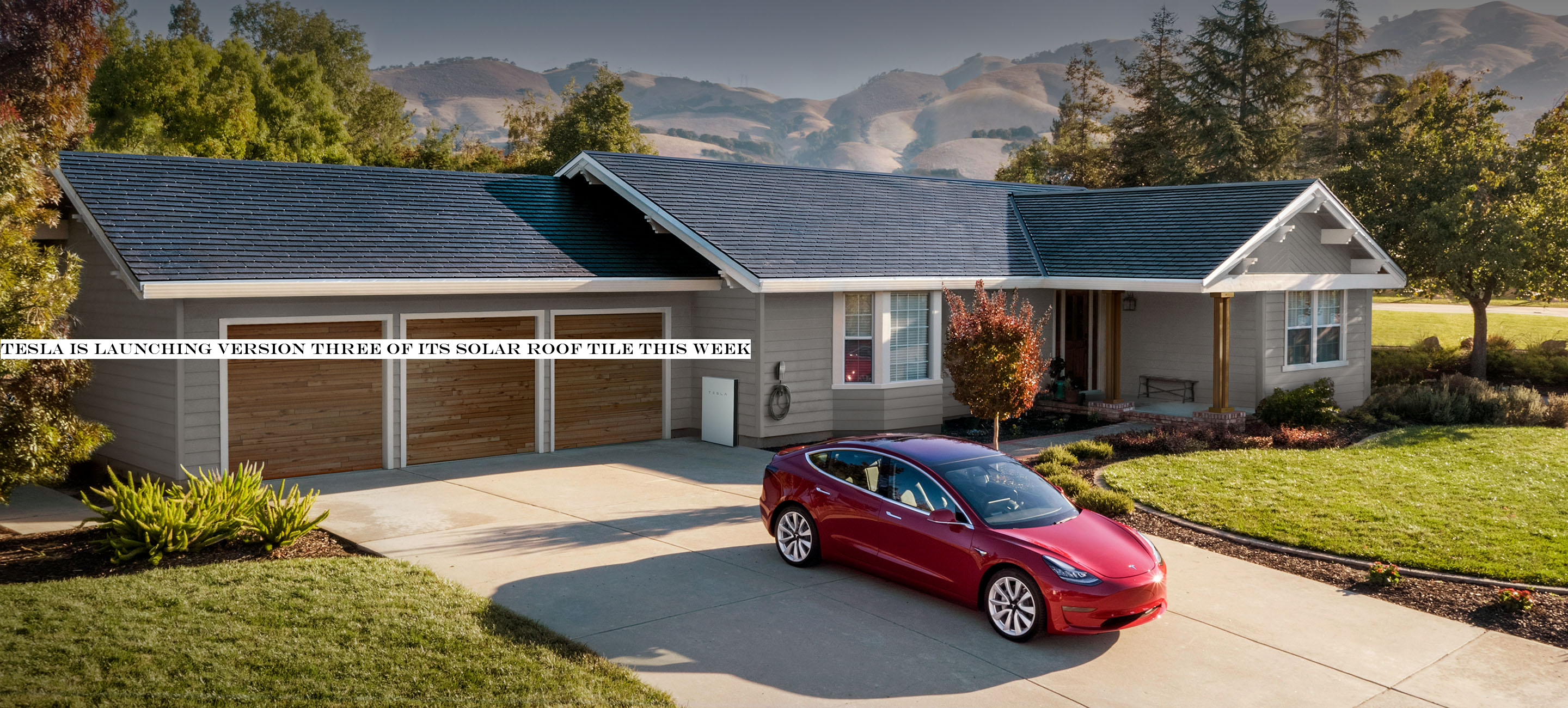
Tesla will debut a new, third iteration of its solar roof tile this week — with an official debut tomorrow afternoon. Tesla CEO Elon Musk said during the companyearnings call on Wednesday that it&ll make an official announcement detailing the differences in generation three on Thursday afternoon.
Tesla originally unveiled its solar roof tile product back in 2016, and officially opened pre-orders in 2017. During the companyannual shareholder meeting in June, Musk said that the product was already in its third iteration, which he said improved performance and put the product on cost parity with cheap, non-solar roofing tiles, once you factor in savings over time on utility cost plus the cost of purchase for the new roof.
It seems like that version was in testing at that point, and is now ready for general consumer sales and purchase. The solar tiles have not seemed to have seen consumer installations in any kind of significant scale to date, with existing customers with reservations in place claiming they haven&t heard much in the way of installation timeline expectations. Perhaps we&ll learn more about availability and roll-out plans along with tomorrow&official& launch of the version-three product.
- Details
- Category: Technology
Read more: Tesla is launching version three of its solar roof tile this week
Write comment (97 Comments)
London-based fintech startup Revolut has two pieces of news to announce this week. First, Revolut is expanding to Singapore after a long beta period. The company already has 30,000 customers there and anyone can open an account now.
Singapore residents will be able to take advantage of all of Revolutcore features. You can open an account from your phone, get a card and start spending anywhere in the world.
Revolut supports Singapore dollar as well as 13 other currencies. You can top up your account, and send and receive money from the app.
With a free account you can convert money in the app without any markup fee on weekdays up to S$9000 per month. You can also withdraw money anywhere in the world without any fee, up to S$9000 per month.
Premium accounts cost S$9.99 per month and Metal accounts cost S$19.99 per month in Singapore. You get higher limits and a few additional features with Metal.
Revolut is currently available in the U.K., Europe and Australia. There are 7 million Revolut customers in total. The company is still working on its launch in the U.S. and Canada for later this year.
The other piece of news is that Revolut has signed a global partnership with Mastercard. Revolut has already been working with Mastercard to issue cards, so this is an expansion of the current deal.
Revolut can now issue cards that work on the Mastercard network in any market where Mastercard is accepted, which represents around 210 countries. It doesn&t mean that Revolut will launch in 210 countries. But the startup says that the first Revolut cards in the U.S. will work on Mastercard.
It also doesn&t mean that Revolut will work exclusively with Mastercard. The company also works with Visa and recently announced a partnership deal. But at least 50% of all existing and future Revolut cards in Europe will be Mastercard branded.
It shouldn&t matter much to end customers, as I have yet to see a place that accepts Mastercard but not Visa, or Visa but not Mastercard. But Revolut is clearly using market competition to its advantage.
- Details
- Category: Technology
Read more: Revolut launches publicly in Singapore, signs deal with Mastercard
Write comment (97 Comments)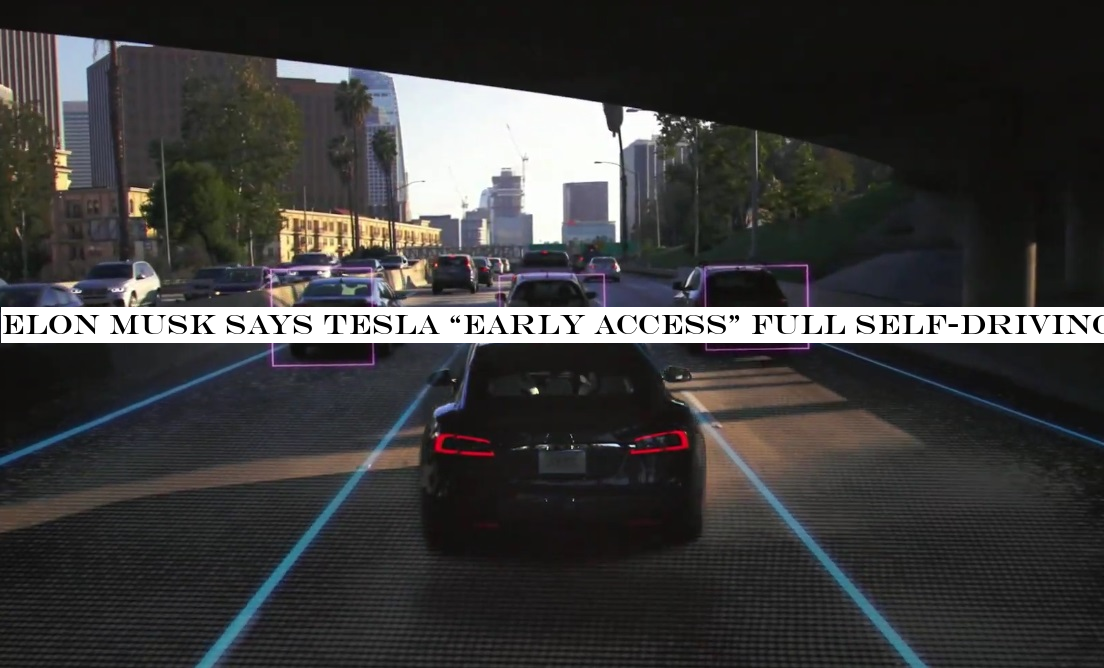
Tesla CEO Elon Musk said on the companyearnings call today that the companyfull self-driving mode, in a feature-complete release, could arrive as early as the end of this year. That would be made available in an ‘early access& mode which is essentially a limited beta, and Musk qualified that this isn&t a sure thing.
&While itgoing to be tight, it still does appear that will be at least in limited in early access release of a feature complete self-driving feature this year,& he said on the call.
He added that it¬ for sure,& but that it &appears to be on track& for a limited private beta by yearend.
This follows the release of TeslaSmart Summon automated parking lot driverless parking lot hailing feature. It allows Tesla owners to call their cars from their parking spots to pick them up from a curbside within the parking lot. The feature has been used plenty of times with mixed results reported from early use, but Musk also said that the company will be releasing an updated version of the software with improvements in the next &week or so.&
The Smart Summon update is an improvement built on the data taken from the &over a million& uses of the feature by Tesla owners already since its release at the end of September.
To make use of the full self-driving mode that Tesla plans to introduce, vehicle owners will have to own the FSD upgrade package, which is a $7,000 upgrade after it increased from $6,000 in August.
Tesla began shipping its new full self-driving computer hardware in all new vehicles beginning in April, moving to its own custom chip. This was to ensure that enabling the FSD feature would be a software-only update, which is something the company had claimed would be possible with a previous generation of self-driving computing hardware, but the challenge has clearly been more difficult than expected & estimated timelines for the featuredeployment have also slipped multiple times.
Musk added in response to a question later in the call that while he thinks ‘early access& availability could be late this year, but full self-driving &reliable enough that you do not need to pay attention, in our opinion& won&t be available until &the end of next year.&
To clarify what &feature-complete FSD& means in this context, Musk later described multiple levels of Teslaassessment of self-driving tech, and specified that this meant cars are &able to be autonomous but requiring supervision and intervention at times.&
- Details
- Category: Technology
Read more: Elon Musk says Tesla “early access” full self-driving could arrive by end of year
Write comment (98 Comments)
Bill McDermott has landed. Two weeks ago, he stepped down as CEO at SAP after a decade leading the company. Yesterday, ServiceNow announced that he will be its new CEO.
Itunclear how quickly the move came together but the plan for him is clear: to scale revenue like he did in his last job.
Commenting during the companyearningcall today, outgoing CEO John Donahoe said that McDermott met all of the boardcriteria for its next leader. This includes the ability to expand globally, expand the markets it serves and finally scale the go-to-market organization internally, all in the service of building toward a $10 billion revenue goal. He believes McDermott checks all those boxes.
McDermott has his work cut out for him. The company2018 revenue was $2.6 billion. Still, he fully embraced the $10 billion challenge. &Well let me answer that very simply, I completely stand by [the $10 billion goal], and I&m looking forward to achieving it,& he said with bravado during todaycall.
Itworth noting that as the company strives to reach that lofty revenue goal in the coming years, it will be doing with a new CEO in McDermott, as well as a new CFO. The company is in the midst of a search to fill that key position, as well.
McDermott has been here before though. He points out that in the decade he was at SAP, under his leadership the company moved the market cap from $39 billion to $163 billion. Today, ServiceNow market cap is similar to when McDermott started at SAP at a little over $41 billion.
He also recognizes that this is going to be a new challenge. &I&ve seen a lot of different business models, and [SAP has] a very different business model than ServiceNow. This is a pure play cloud,& he said. That means as a leader, he says that has to think about product changes differently, how they fit in the overall platform, while maintaining simplicity and keeping the developer community in mind.
Ray Wang, founder and principal analyst at Constellation Research said that ServiceNow is at a point where it needs an enterprise-class CEO who understands tech, partnerships, systems integrators and real enterprise sales and marketing — and McDermott brings all of that to his new employer.
- Details
- Category: Technology
Read more: Bill McDermott aims to grow ServiceNow like he did SAP
Write comment (91 Comments)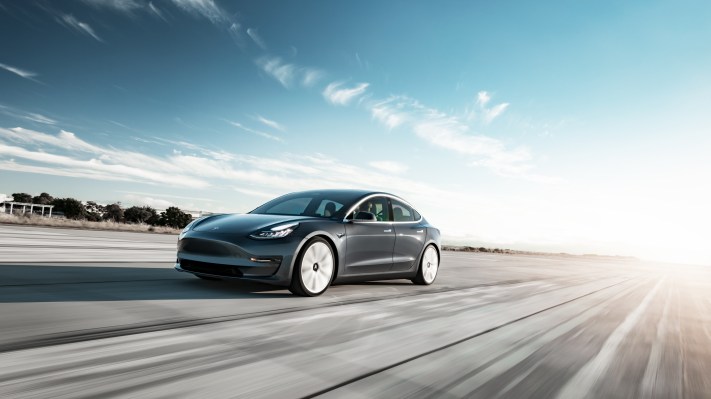
Tesla has started trial production of its Model 3 vehicle in its new Shanghai factory, which CEO Elon Musk called a &template for future growth.&
This trial basis includes all aspects of production, including body, paint and general assembly. Tesla said it is clearing final regulatory hurdles such as finalizing its manufacturing license. Once complete, the company will begin ramping production and delivering vehicles, the automaker said Wednesday in its third-quarter earnings report.
Teslafactory capacity is poised to grow even larger as it gets closer to picking a location in Europe for its third factory. The company said Wednesday itin the final stages of its site-selection process. The eventual European factory is expected to produce both Model 3 and Model Y, Tesla said.
For now,Teslafuture financial health is tied, in part, to its ability to ramp up sales in China, the worldlargest electric vehicle market.
In July 2018, Tesla struck a deal with the Chinese government to build a factory in Shanghai. It was a milestone for Tesla and Musk, who has long viewed China as a crucial market. And it was particularly notable because China agreed for this to be a wholly owned Tesla factory, not a traditional joint venture with the government. Foreign companies have historically had to form a 50-50 joint venture with a local partner to build a factory in China.
Chinese President Xi Jinping has pushed forward plans to phase out joint-venture rules for foreign automakers by 2022. Tesla is one of the first beneficiaries of this rule change.
The opening of the China factory comes at a time of rising trade tensions between China and the United States. Tesla has been particularly exposed to relations between China and the U.S., and the resulting rising tariffs. Tesla builds its electric sedans and SUVs at its factory in Fremont, Calif. and ships them to China, which subjects the vehicles to an import tariff.
&We believe China could become the biggest market for Model 3,& the company said in its third-quarter earnings report.
Tesla broke ground on the factory in China in January and it was constructed in just 10 months, including the installation of stamping and other equipment. Musk called the speed of construction &unprecedented.&
- Details
- Category: Technology
Read more: As Tesla begins ‘trial’ Model 3 production in China, it closes in on a European factory
Write comment (99 Comments)Following the introduction of its digital well-being tools for Android at GoogleI/O developer conference last year, the company has since expanded the feature set to include new options, like Focus mode and better parental controls for families with children. Now, Google is trying something new. The company today introduced a set of &experimental& apps designed to help users be better aware of their device use and reduce their screen time.
The apps, which are a part of a new Digital Wellbeing Experiments platform, are very different from your standard screen-time controls. They&re open-sourced projects designed to kickstart out-of-the-box thinking, but not necessarily must-have tools.
One experiment, Unlock Clock, simply shows you how often you unlock your phone.
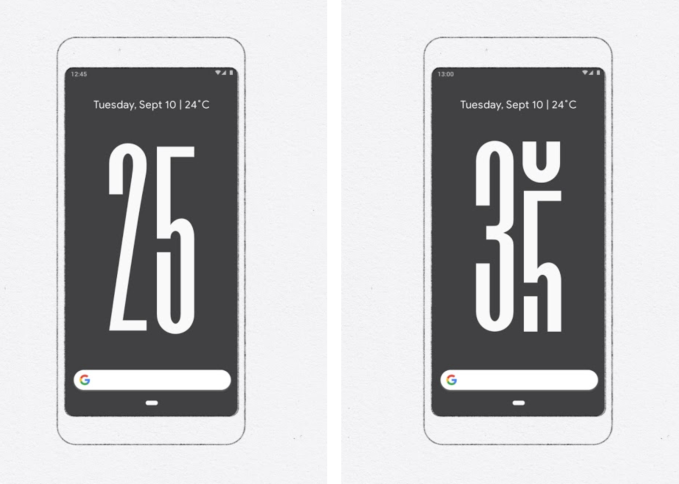
Another, We Flip, lets a group of friends or a family disconnect from technology altogether by flipping a big switch. And if anyone unlocks their phone, the session ends for everyone — almost like making screen time a competitive family sport.
Desert Island and Morph, meanwhile, take an app-centric approach to screen-time reduction. The former requires you to go a day with only your most essential apps, while the latter helps you stay focused by giving you the right apps at the right time of day.
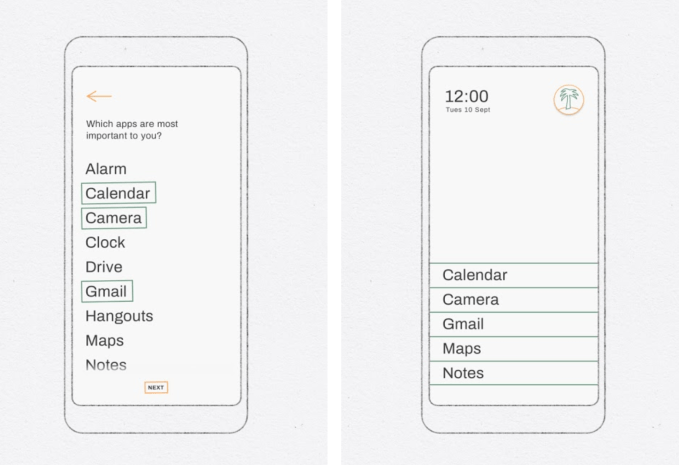
That idea had been popular in years past with Android launchers, like Cover, EverythingMe and Aviate, for example. In those cases, different homescreen configurations and widgets would appear based on what time of day it was and what you were doing. However, the idea of smartphones that personalized themselves to our needs never really took off — perhaps because these same experiences could never transition to iOS, where Applerestrictions limited how much customization could be done.
The Post Box experiment is one of the more intriguing creations — it offers to hold your notifications until whatever time suits you.
Notification spam is now arguably one of the worst side effects of becoming a smartphone user. Itso bad, in fact, that both Apple and Google have had to redesign ways for users to reassert control at the OS level.
Earlier this year, Apple CEO Tim Cook even said that he has gutted his iPhonenotifications, touting the iOS feature to do so as some sort of miraculous invention — when in reality it was Appleflawed design of the notification system to begin with that allowed developers to continually interrupt us with their irrelevant pings.
A mailbox-style system — like this new Google experiment provides — was another obvious choice, but one that wouldn&t have allowed an app ecosystem to blossom.
Then there is the most whimsical experiment of them all: Paper Phone.
This app will print you a custom booklet of the critical information you need that day, including favorite contacts, maps, meetings, tasks, weather info and more.
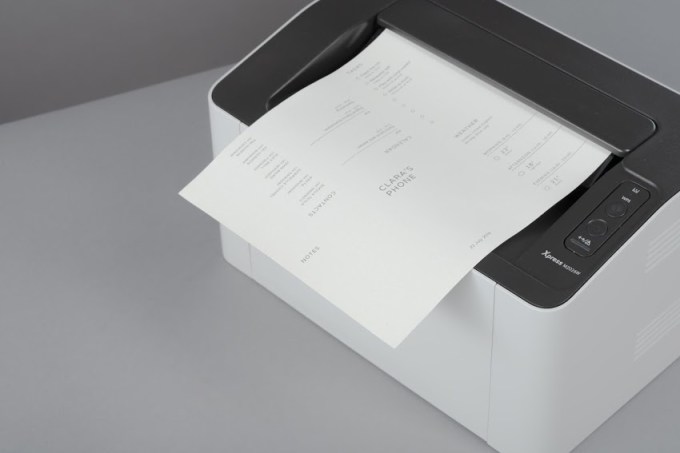
You can then take a short break from your device, without giving up access to your must-have information. Itlike time-traveling for those of us old enough to remember life before smartphones, and a small gift of freedom for those who have never been without.
Google says this new Digital Wellbeing Experiments platform is open for contributions from any designers and developers who want to share their ideas for a more balanced relationship with technology.
&We hope these experiments inspire developers and designers to keep digital well-being top of mind when building technology. The more people that get involved, the more we can all learn how to build better technology for everyone,& said Google.
Interested contributors can download the &Hack Pack& and open-source code available on the site to get started.
The experiments only run on Android and are offered for download on the Play Store.
While the new experiments are less about fixing existing Google products and more about playing around with new ideas, Google has several other screen-time/well-being initiatives underway, including its Android native well-being features, YouTube&take a break& reminders and other screen-time controls, Google Assistantwind-down routines, Gmail automations like auto-reply and send later, Google Family Link and more.
- Details
- Category: Technology
Page 551 of 5614

 19
19




